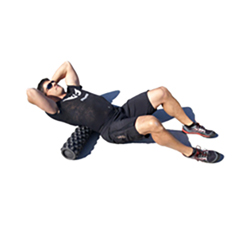
Pictured above are the scalene muscles. They lie underneath the sternocleidomastoid, originate along the front & side of your neck, and attach to the first and second ribs. They have a lot of influence on proper neck posture, and are typically "stress muscles."
The image of the muscles is layered, showing how some of the muscles are covered by the others. All of the muscles are see-through so that you can appreciate the location and size of each muscle relative to the others.
Click here for a list of all the muscles.
Individual upper back & neck muscles you might be interested in: (any inactive links will be live soon)
Muscles that attach to the head (mastoid or other skull bone) and the neck (cervical vertebrae) and/or head & torso (thoracic vertebrae and/or ribs)
- Sternocleidomastoid
- Trapezius
- Splenius Capitus
- Longissimus Capitus
- Semispinalis Capitus
Muscles that attach to the neck (cervical vertebrae) and another area of the spine (cervical or thoracic vertebrae) and/or ribs
- Anterior Scalene
- Medial Scalene
- Posterior Scalene
- Splenius Cervicis
- Semispinalis Cervicis
Muscles that attach to the head or neck & the shoulder blade (scapula)
Good luck working out those tight knots.
If you have any questions, please post a comment. We try to respond within 24 hours.
We're here to help you get more out of your training!









